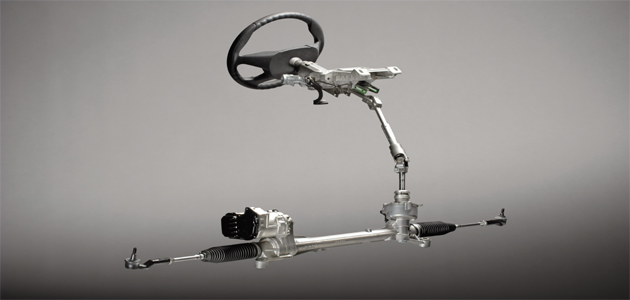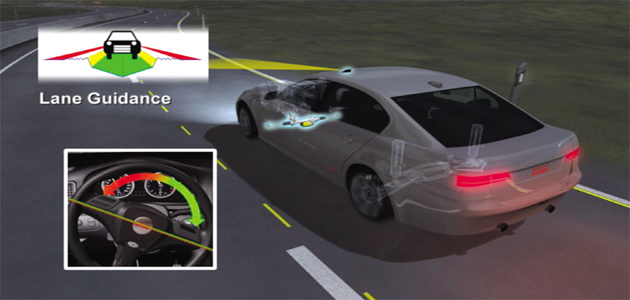
In addition to offering a ‘green’ power-steering solution, EPS is a key building block for providing a number of vehicle safety features – both in terms of working together with other active systems, such as driver assist systems, or electronic stability control, and its ability to include new features to mitigate vehicle “error-states”.
This type of steering system allows vehicle manufacturers to differentiate their offer through a host of these features, which can be programmed within the EPS software – a number of which are being enabled by TRW.
EPS features
Frank Lubischer, Vice President, TRW Steering Engineering comments: “With the given mechanical and hydraulic constraints of traditional hydraulic steering systems, there are limits to what can be achieved – compromising the ability to implement functions and steer feel characteristics beyond conventional physical boundaries.

“One of the beauties of electric steering is that these functions are controlled through software – and can be programmed quickly to allow for the desired outcome. For example, the amount of power steering assist can easily be varied: full assist at slower speeds for tight turning maneuvers such as parking, or a stiffer, sportier response at high speeds such as highway driving, and these modes could be chosen by the driver.
“Likewise, the electric steering system can be programmed to intelligently respond to varying vehicle and environmental conditions – such as different tyre types, payloads or road surfaces.”
Using electronic control algorithms, the company works in close collaboration with its customers to develop and implement several advanced steering functions – a number of which are in production or due to go into production in the next two to three years.
These fall into two functions – driver assist and safety. Frank adds:” Electric steering plays a significant role in TRW’s Driver Assist Systems technology roadmap, as it represents the one system in the vehicle that has a permanent connection with the driver, continuously translates the driver’s directional commands, and directly provides feedback from the vehicle’s tyres to the driver’s hands.”
Staying safe
Safety functions are those that can detect and react to hazardous conditions, like slippery or icy road surfaces and torque feedback that infers a driver’s drowsiness or attention. When coupled with sensors, surrounding or approaching vehicles can be detected, enabling the system to warn drivers of dangerous conditions.
Frank continues: “Electric steering safety enhancements are achievable through integration with other systems. For example, Driver Steer Recommendation functionality can be delivered through the integration of EPS and ESC to help correct situations, such as oversteer in hard cornering or when encountering a slippery surface on one side of the vehicle and dry pavement on the other. Tests have shown up to an 8% reduction in stopping distance.
“When combined with driver assist technologies, such as camera-based systems, electric power steering can help assist the driver in staying in the intended lane by providing a torque through the steering wheel that guides the driver back toward the centre of the lane. A full lane guide system can actively assist in keeping the vehicle in the centre of the lane.”

What are driver assist functions?
TRW’s driver assist functions can help the driver in unpleasant, but necessary, steering tasks, such as when mitigating road and environmental conditions, as well as to support parking manoeuvres. These include:
Pull drift compensation (PDC)
This can detect if the vehicle is drifting to one side (through a suspension error or from a side wind or cambered road), and will make automatic adjustments, eliminating the need for constant steering wheel corrections.
Active disturbance and road shake compensation
This helps reduce vibration in the steering wheel, caused by uneven road conditions and imbalanced torque at the wheels.
Torque steer compensation
To correct the tendency in some front-wheel-drive vehicles to pull to one side under the influence of high-engine torque.
Semi-automatic parking
When linked to proximity sensors, EPS can ‘automate’ the sometimes challenging task of parallel parking. Sensor information along with algorithms are used to calculate the best parking trajectory and EPS provides the assistance to steer the vehicle.
Driver steer recommendation
Provides an interface to the braking system in order to request an additional driver torque overlay to the steering system. Usually, the braking tuning is a compromise: the shorter the stopping distance, the more unstable the vehicle becomes. With Driver Steer Recommendation, the braking system can be tuned to minimise the stopping distance and simultaneously request a steering torque to stabilise the vehicle.









